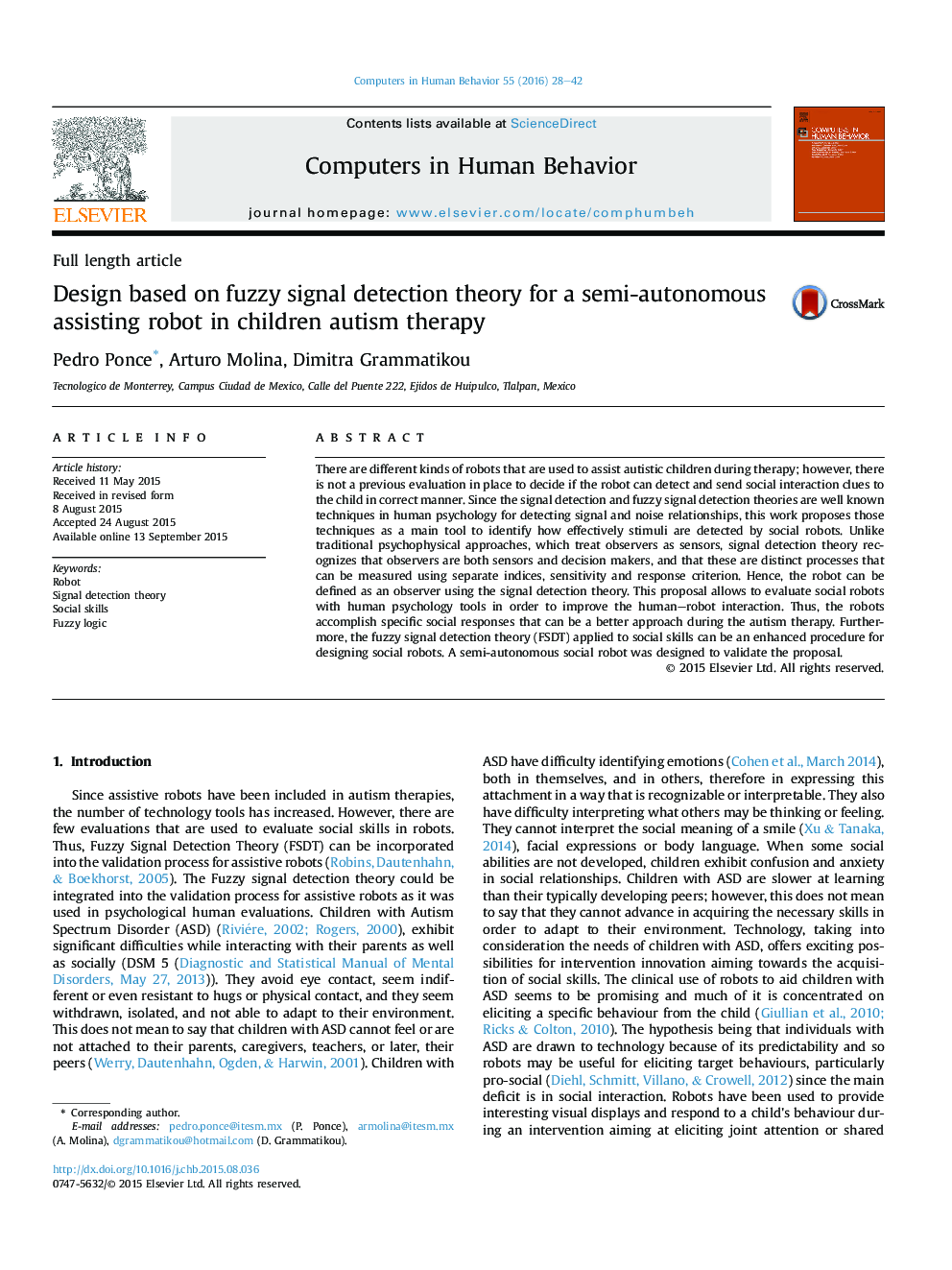| Article ID | Journal | Published Year | Pages | File Type |
|---|---|---|---|---|
| 350149 | Computers in Human Behavior | 2016 | 15 Pages |
•A novel methodology for designing social robot based on signal detection theory.•The results show an effective method to improve the human robot interaction.•The semiautonomous robots reach excellent results for autism therapy.
There are different kinds of robots that are used to assist autistic children during therapy; however, there is not a previous evaluation in place to decide if the robot can detect and send social interaction clues to the child in correct manner. Since the signal detection and fuzzy signal detection theories are well known techniques in human psychology for detecting signal and noise relationships, this work proposes those techniques as a main tool to identify how effectively stimuli are detected by social robots. Unlike traditional psychophysical approaches, which treat observers as sensors, signal detection theory recognizes that observers are both sensors and decision makers, and that these are distinct processes that can be measured using separate indices, sensitivity and response criterion. Hence, the robot can be defined as an observer using the signal detection theory. This proposal allows to evaluate social robots with human psychology tools in order to improve the human–robot interaction. Thus, the robots accomplish specific social responses that can be a better approach during the autism therapy. Furthermore, the fuzzy signal detection theory (FSDT) applied to social skills can be an enhanced procedure for designing social robots. A semi-autonomous social robot was designed to validate the proposal.
